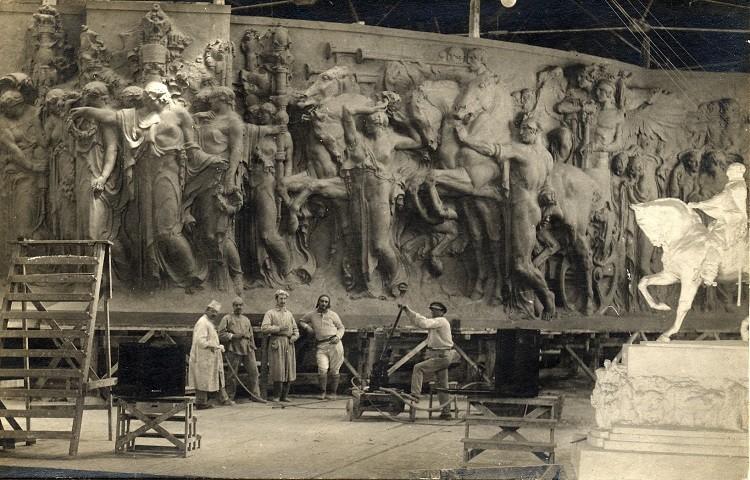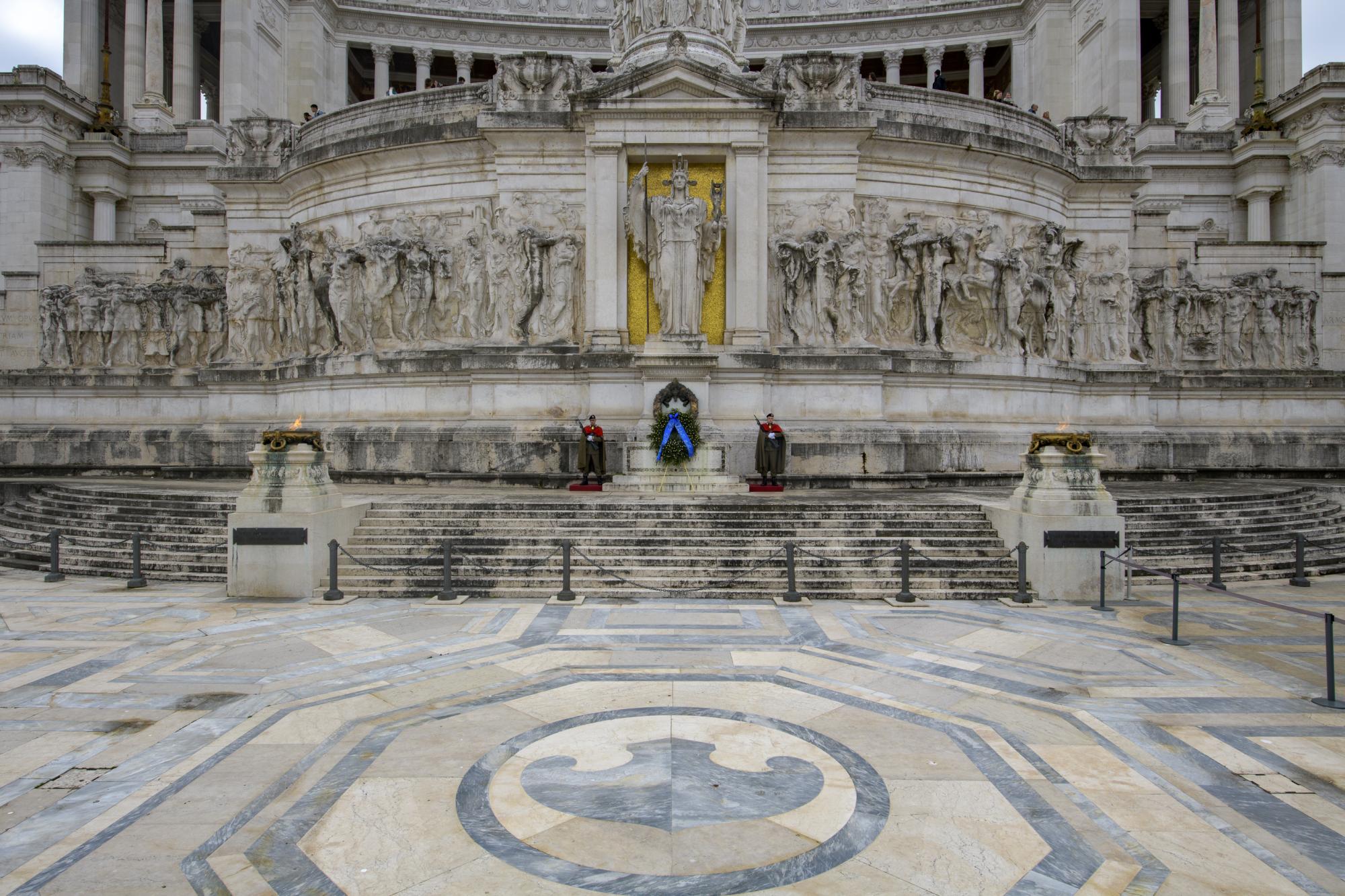The Altar of the Fatherland is the central curved area of the Vittoriano. The architect Giuseppe Sacconi, commissioned to revise the initial project, decided to transform this part of the monument to Vittorio Emanuele II into a great lay altar dedicated to the nation and its values.
Its decorations – 70 meters long and 5 meters high – are by the Lombard sculptor Angelo Zanelli (1879-1942). The winner of the competition announced in 1908, Zanelli completed the work in 1925.
What is the Altar of the Fatherland?
At the centre of the sculptural frieze is the statue of The Goddess Roma in an aedicule with a gilded mosaic ground. At the sides the two bas-reliefs are conceived as majestic processions. On the west side The Love of Country that fights and wins, on the east side The Work that builds and fecundates. Zanelli, originally from the province of Brescia, was trained in the current of classicism, and then developed his style in the spirit of Liberty and Symbolism. This stylistic code enabled him to combine a profound memory of antiquity with the most advanced international trends: The Goddess Roma reveals the marked influence of the Austrian Gustav Klimt and the Viennese Secession.
Want to know more? Altar of the Fatherland












